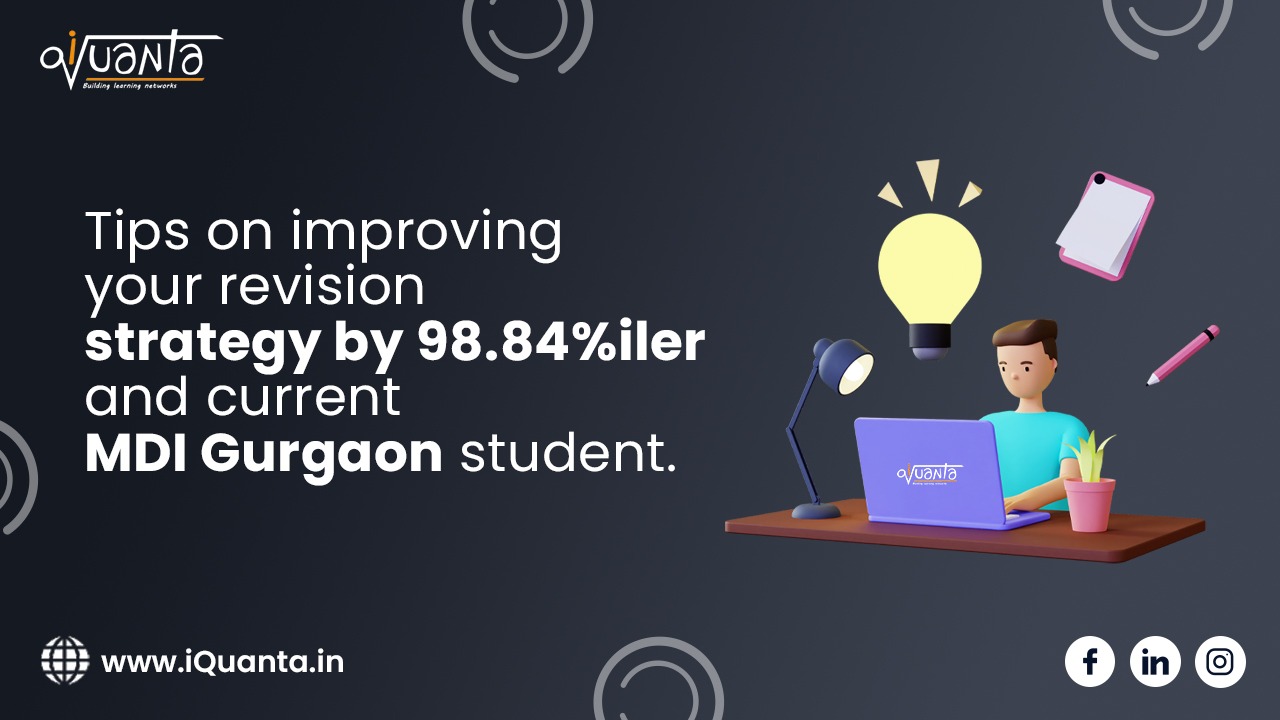After months of preparation for the CAT exam, when the exam time is near, the most important thing is revision. Although sometimes, being at the fag end of the preparation, it feels scary but well, there is good news for you. As compared to other exams, CAT tests you on your understanding and analytical skills which means you don’t have to put in a lot of hours for revision. Just one day is enough for this. Also there aren’t many concepts that have to be covered but one has to ensure effective revisions.
Revisions help in retaining topics, facts, methods, shortcuts etc. whatever has been covered in past few months while doing the preparation. Further, it helps in increasing confidence and reducing anxiety. Hence, it is an important part which needs to be done strategically. By strategically, I mean going through the things which are really important before the exam. While doing the preparation, we study a lot of things and practice a lot of questions but one can’t go through everything, hence, strategy regarding what to study for revision becomes important.
Different sections have a different way to revise. Further, the way of revision may vary from person to person. In whatever way you do your revision, we have to ensure revision is effective in order to maximize the score. In this article, I will share my experience for different sections along with the resources used.
VARC Section
This section tests our critical reasoning skills. Now, critical reasoning skills are something which are developed over time. Once we get a gist of this, it becomes easier to solve the questions. Hence, this involves practice. Being an engineer, this was the most challenging section for me. I had to work hard on my critical reasoning skills. Initially, I was making lots of mistakes while solving questions. Over time I worked on the same and was able to score decent in the VARC section of my CAT exam. As such, there aren’t many concepts covered in this section. Hence, there is nothing much to revise.
While solving different Reading Comprehension questions, I used to make note of some shortcuts which I could go through just before the exam. These shortcuts were related to what type of questions are majorly asked, how can I eliminate the options, how to solve para summary questions etc. I used to solve RC questions by eliminating different options and sometimes, there is a pattern that can be found in similar questions. Hence, I used to take note of certain shortcuts/strategies like these. Also, while solving para summary questions, usually the last line of the paragraph is the gist of the paragraph and the options matching the most is the answer. Similarly, there can be some other shortcuts.
DILR Section
This section basically tests analytical and reasoning skills which can be developed over time. There isn’t any such syllabus to cover for this but one should practice as many varieties of questions as possible. Further, it is very important to know the topics which we are good at and which we need practice. Since, there is no need to attempt all the sets in this section, so, one should be accurate in attempting the sets which we are good at.
Again this section doesn’t require as such any revision but I used to mark all the sets which I found tricky. The resources I used majorly for preparation was TIME institute material and so I used to mark tricky questions in the module. Also, while doing revision, I used to just go through the key concept rather than solving the entire set again. It is important to ensure that revision being done has to be effective and so time has to be spent majorly on understanding the concept. Apart from that, strategizing is very important in this section as only certain sets have to be attempted and one should develop the skill of identifying which one to attempt.
Quantitative Reasoning Section
This is the only section which requires major time of our total revision time. I prepared for this section from TIME material and used to underline the important facts and concepts. While revision, I used to just go through all the formulas and underlined stuff. Being an engineer, I was good at Maths and so I had to maximize my score in this section. Hence, I used to practice the most for this section.
Speed and accuracy is of utmost importance for this section and so while solving questions, I used to do that under a time-limit. Initially while giving mocks, my accuracy was not upto the mark as I was choosing wrong questions to attempt. Over time, I worked on that. With multiple revisions of the important concepts, it helped me get confidence before the exam and gradually I improved my accuracy.
Certain do’s and don’ts
- Time is of essence while doing revision, hence, focus on revising only the important things.
- Underline or mark important concepts while studying.
- Be aware of the topics you are good at.
- Don’t attempt questions related to the concepts which you find challenging in the beginning of the paper.
- Don’t do revision on the day of the exam.
- Revision should only be done when your concentration is at maximum level.
Conclusion
Revision for the CAT exam isn’t much time consuming as the exam is majorly based on understanding. There is nothing much to cram for this paper except some formulas. Hence, it is not difficult to do an effective and crisp revision. Most of the time should be spent on analysis of the strategy you are following in different mocks. It is important to know what is working best for you and only such things have to be kept in mind before the exam. Apart from that, it is important to ensure not studying too much on the day before the exam. Just spend a few hours on revision and you are good to go.
To structure your CAT Preparation in a manner that it is effective consider visiting iQuanta website and being a part of iQuanta CAT 21 Course at www.iQuanta.in.
You can also check out and be a part of their Facebook group for peer learning, doubt solving and free material. https://www.facebook.com/groups/Rockthecat
For a structured CAT preparation and one-on one counselling, visit the link below.
To join India’s largest CAT preparation community and for free 24*7 doubt clarification, join the group linked below.






